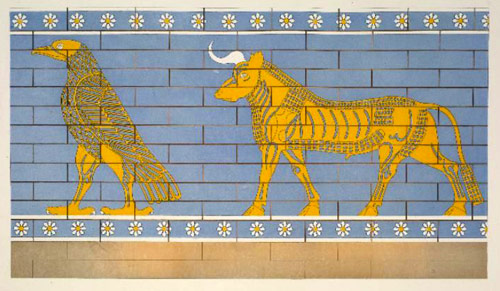“Signing off on the earliest writing”.
As part of Cashel Arts Festival, a most interesting discussion by Trinity Assyriologist Dr Martin Worthington, will take place at Cashel Library tomorrow morning, September 13th 2024 at 11:00am sharp.
You can locate the Cashel Library building, situated on Friar Street, Lady’s Well, Cashel, Co. Tipperary, HERE. (G487+RX)
Please Note: For this free event booking is essential to Tel. No.:- 062, 63825
[Note: An Assyriologist is a person who specializes in the archaeological, historical, cultural and linguistic study of Assyria and the rest of ancient Mesopotamia (modern day Iraq). The word Assyriologist derived from Assyriology, the study of the culture, history, and archaeological remains of ancient Assyria]
Ancient symbols on a 2,700-year-old temple, which have long baffled experts, have now been explained by the aforementioned Dr Worthington.
A sequence of ‘mystery symbols’ were located on view at temples in various locations in the ancient city of Dūr-Šarrukīn, present day Khorsabad, Iraq, which was once ruled by Assyria’s King Sargon II, (721-704 BC).

The sequence of five symbols, a lion, eagle, bull, fig-tree and plough, were first made known to the modern world, through drawings published by French excavators in the late nineteenth century. Since then, there has been a spate of ideas about the symbols and what they possibly might mean.
Same have been compared to Egyptian hieroglyphs, understood to be reflections of possibly imperial might, and suspected to represent the said king’s name – but how?
Dr Worthington (Trinity’s School of Languages, Literatures and Cultural Studies) has proposed a new solution in a paper published first last April, in the Bulletin of the American Schools of Oriental Research.
At this completely free event at Cashel Library the public can meet Dr Worthington tomorrow morning and learn at first hand his solution to solving the mystery of these hieroglyphs.

Leave a Reply